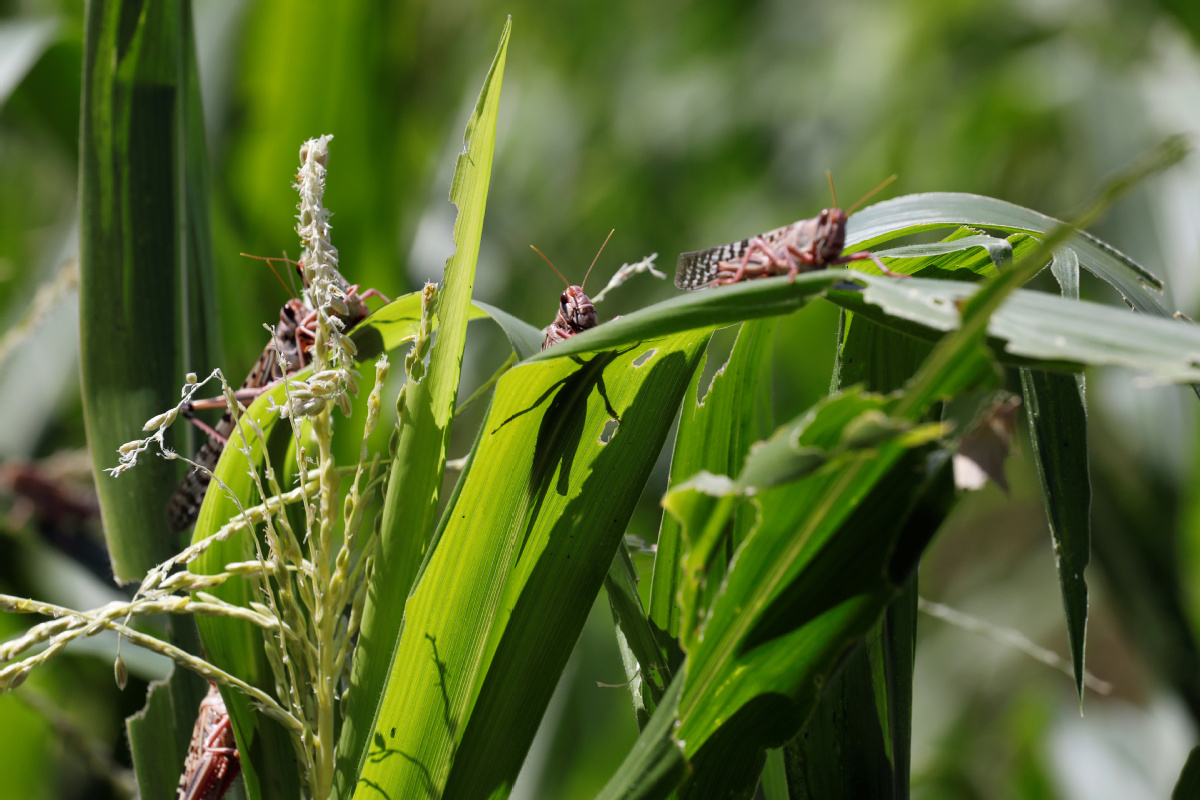East Africa's woes have longer to run


The size of a large city
In just 10 days, Polo said, the locusts had transformed from hoppers to more mature flying swarms that in the next couple of weeks will take to long-distance flight, creating the vast swarms that can largely blot out the horizon. A single swarm can be the size of a large city.
Once airborne, the locusts will be harder to contain, flying up to 200 kilometers a day.
"They follow prevailing winds,"Polo said. "So they'll start entering Sudan, Ethiopia and eventually come around toward Somalia." By then, the winds will have shifted and whatever swarms are left will come back into Kenya.
"By February, March of next year they'll be laying eggs in Kenya again," he said. The next generation could be up to 20 times the size of the previous one.
The World Bank earlier this year announced a $500 million program for countries affected by the historic desert locust swarms, while the FAO has sought more than $300 million.
Meanwhile, scientists at the International Center of Insect Physiology and Ecology, or ICIPE, a Nairobi lab, are experimenting with novel ways to kill the locusts.
They are trying with biopesticides and the use of locusts as human and animal food as they look for environmentally friendly extermination methods.
ICIPE researchers were part of a group that discovered an isolate from a fungus, Metharizium acridum, could kill locusts without harming other creatures. The isolate is now being used across East Africa.
Now researchers are poring through 500 other fungi and microbes in their bio bank in the hope of discovering another locust poison.
ICIPE scientist Baldwyn Torto's research has mostly focused on locust smells and pheromones.
Before locusts can fly, they have a certain chemistry and therefore a unique smell that allows them to remain in a group, he said. That smell changes as locusts mature.
Disseminating the scent of an adult among the young can help destroy swarms. "They get disoriented, the group breaks into pieces, they cannibalize each other and they become even more susceptible to biopesticides," he said.
Serve them in a kebab
A lower-tech, but still environmentally friendly way of combating locusts is eating them.
The ICIPE is developing nets and backpack-vacuums to capture large numbers of locusts. The protein-rich insects can then be cooked or crushed into meal or oil suitable for animal feed or human consumption. The lab organizes regular events to normalize the consumption of insects.
Researcher Chrysantus Tanga eats the insects himself. In the ICIPE cafe, the heads, legs and wings have been removed.
"They have to make it presentable for a first-timer," said Tanga, motioning toward colorful plates of locust-based meals prepared by ICIPE chefs, ranging from deep fried with tartar sauce, to skewered among vegetables in a kebab.
"For me, I'll eat 100 percent of it ... whatever is crunchy."
Agencies via Xinhua































